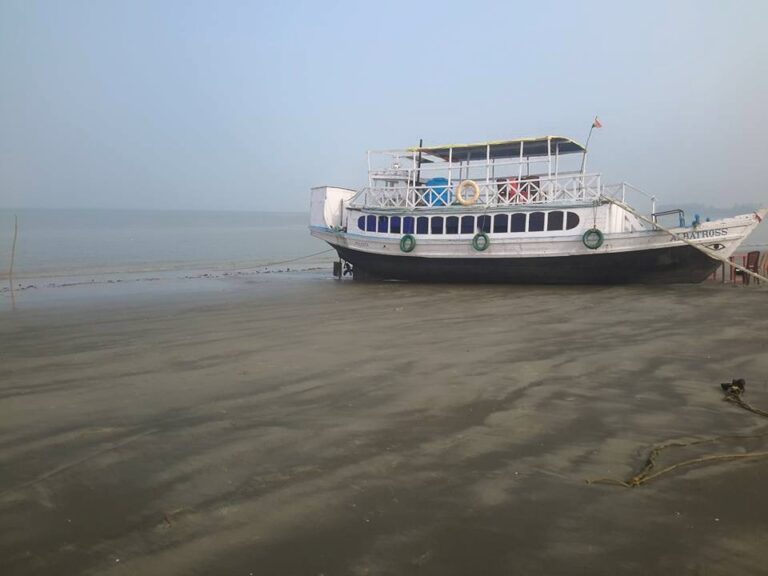Navigating Towards Progress: Upgrading Indian Ports for Global Competitiveness
India, with its vast coastline stretching over 7,500 kilometers, holds immense potential for maritime trade. Ports play a pivotal role in facilitating trade, serving as gateways for goods and services. Recognizing the significance of maritime infrastructure, the Indian government has embarked on a journey of port upgradation and modernization. This blog delves into the importance of upgrading Indian ports, the current status, challenges faced, and the way forward.
Ports serve as crucial nodes in the global supply chain, connecting producers and consumers across continents. Upgrading ports enhances their efficiency, capacity, and competitiveness, thereby attracting more trade and investments. Improved infrastructure not only accelerates the movement of goods but also reduces logistics costs, boosts export competitiveness, and fosters economic growth. Moreover, modernized ports contribute to job creation, skill development, and overall socio-economic development of the regions they serve.
India boasts of a diverse portfolio of ports, including major ports under the jurisdiction of the central government and minor ports managed by state governments. Major ports like Jawaharlal Nehru Port Trust (JNPT), Mumbai Port, Chennai Port, and Kolkata Port handle a significant portion of the country’s maritime trade. These ports have witnessed considerable growth in cargo handling over the years, reflecting increasing trade volumes. However, challenges such as congestion, inadequate infrastructure, outdated technology, and bureaucratic hurdles hinder their optimal functioning.
The journey towards port upgradation is not devoid of challenges. One of the major hurdles is the need for substantial investment in infrastructure development. Funding constraints, both from the government and private sector, pose a significant challenge. Additionally, bureaucratic red tape, land acquisition issues, environmental concerns, and regulatory bottlenecks often delay projects and escalate costs. Moreover, the lack of skilled manpower and technological expertise impedes the adoption of modern practices and technologies essential for port efficiency.
Initiatives and Policies Driving Upgradation: To address these challenges, the Indian government has launched several initiatives and policies aimed at revitalizing the maritime sector. The Sagarmala Programme, launched in 2015, aims to harness India’s coastline and waterways to drive port-led development. It focuses on port modernization, enhancing connectivity, promoting coastal shipping, and developing port-linked industrial clusters. Additionally, initiatives such as Bharatmala, Jal Marg Vikas, and Sagarmala Seaplane Services are aimed at improving road, rail, and inland waterway connectivity, thereby complementing port upgradation efforts.
Technological advancements play a crucial role in transforming port operations. Automation, Internet of Things (IoT), Artificial Intelligence (AI), and Blockchain are revolutionizing port management systems, optimizing resource utilization, and enhancing operational efficiency. Automated container terminals, RFID-based cargo tracking, predictive maintenance, and digital platforms for trade facilitation are some of the technological innovations driving port upgradation. Embracing these technologies can streamline processes, reduce turnaround times, and improve overall port performance.
Given the enormity of investment required for port upgradation, the role of Public-Private Partnership (PPP) becomes paramount. PPP models bring together the expertise and resources of both the public and private sectors, enabling efficient project execution and risk-sharing. The government’s role lies in creating an enabling environment, formulating conducive policies, and providing necessary regulatory support. On the other hand, private players bring in capital, technology, and operational efficiency. PPPs have been successfully implemented in projects like container terminals, port modernization, and hinterland connectivity, driving port upgradation across India.
While pursuing port upgradation, environmental sustainability must remain a priority. Ports are often associated with environmental degradation due to air and water pollution, habitat destruction, and disruption of ecosystems. Therefore, port development plans must integrate environmental considerations and adopt green practices. Measures such as shore power facilities to reduce ship emissions, installation of pollution control devices, mangrove conservation, and adoption of renewable energy sources can mitigate the environmental footprint of ports while ensuring sustainable growth.
Several ports in India have successfully undergone transformational upgrades, setting benchmarks for others to follow. The Jawaharlal Nehru Port Trust (JNPT), India’s largest container port, has invested in modernizing its infrastructure and implementing state-of-the-art technologies. The introduction of Direct Port Delivery (DPD) and Direct Port Entry (DPE) facilities has significantly reduced dwell time and transaction costs, enhancing efficiency and competitiveness. Similarly, the modernization of Visakhapatnam Port, including the development of a dedicated container terminal and mechanized coal-handling facilities, has boosted its cargo handling capacity and operational efficiency.
The upgradation of Indian ports is imperative for unleashing the country’s maritime potential and driving economic growth. While challenges abound, concerted efforts by the government, private sector, and other stakeholders can surmount them. Embracing technological innovations, fostering public-private partnerships, and prioritizing environmental sustainability are key to realizing the vision of modern, efficient, and sustainable ports. With strategic planning, robust policies, and collective action, Indian ports can navigate towards progress, emerging as global hubs of trade and commerce in the 21st century.
References:
- Ministry of Shipping, Government of India.
- Sagarmala Programme website.
- Indian Ports Association.
- Industry reports and academic journals on port development and maritime infrastructure.
